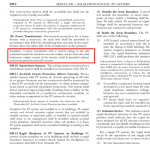I'm working on a solar project with a single 480/277 VAC inverter. The service is 120/208 so we're stepping down the inverter output from 480/277 to 120/208. We're planning to do a supply side connection so I have a fused disconnect as my OCPD on my 120/208 "primary" side. Note I'm still considering the utility side of the transformer as the primary side even though power is flowing from the inverter to the utility instead of utility to load.
The question is, am I required to have overcurrent protection on the "secondary" side, between the inverter and the transformer? All components are installed outdoors.

The question is, am I required to have overcurrent protection on the "secondary" side, between the inverter and the transformer? All components are installed outdoors.




